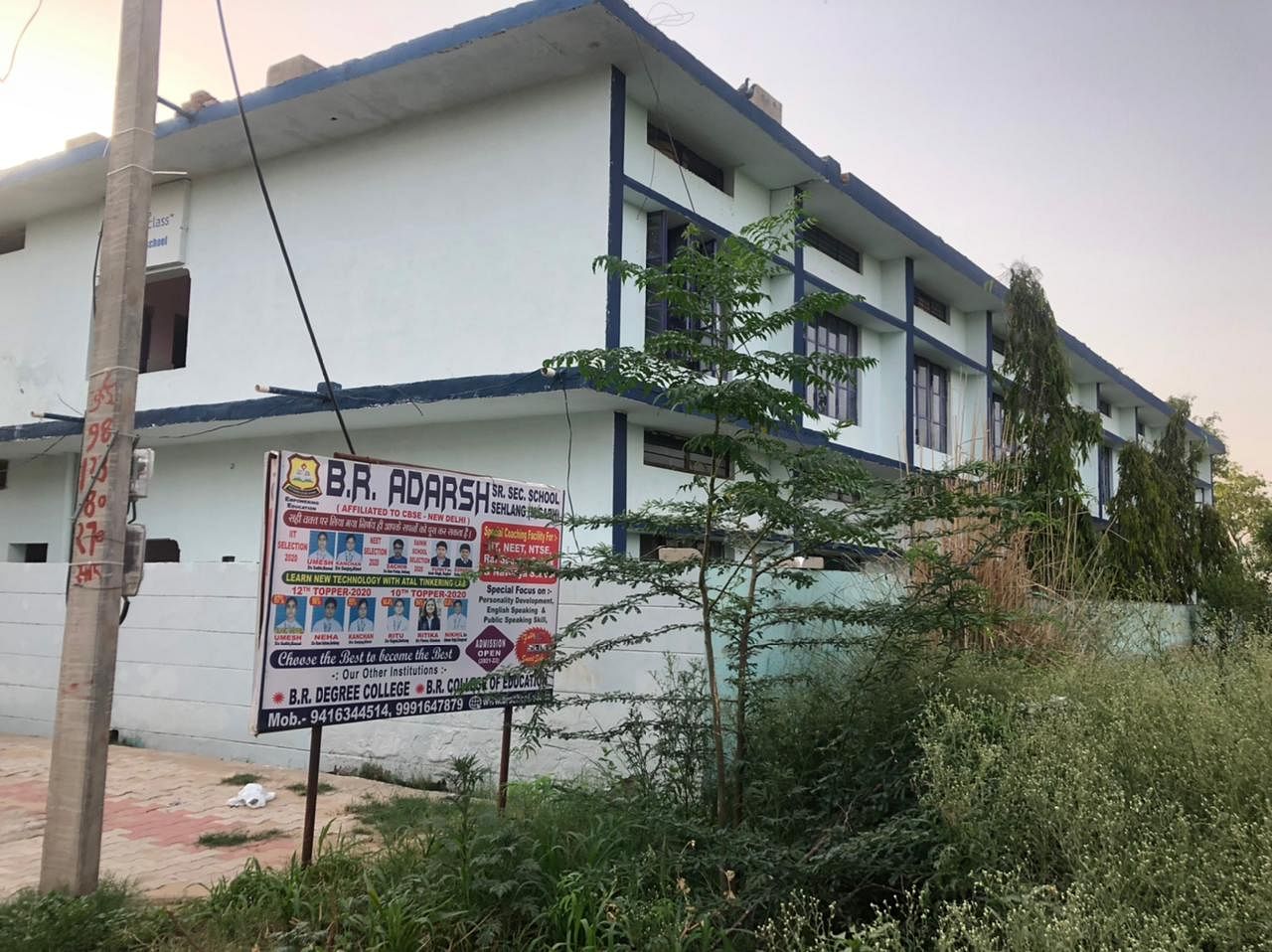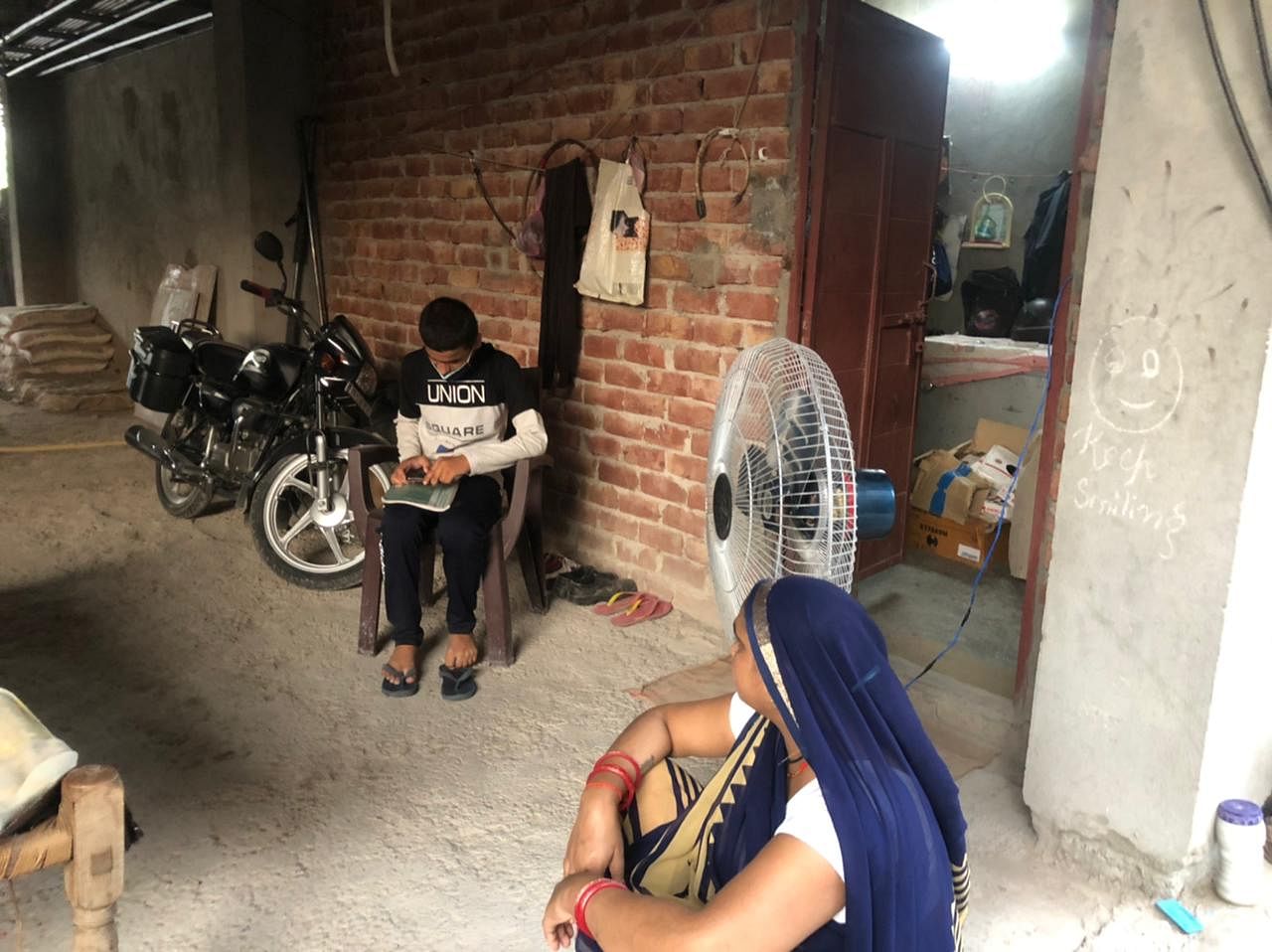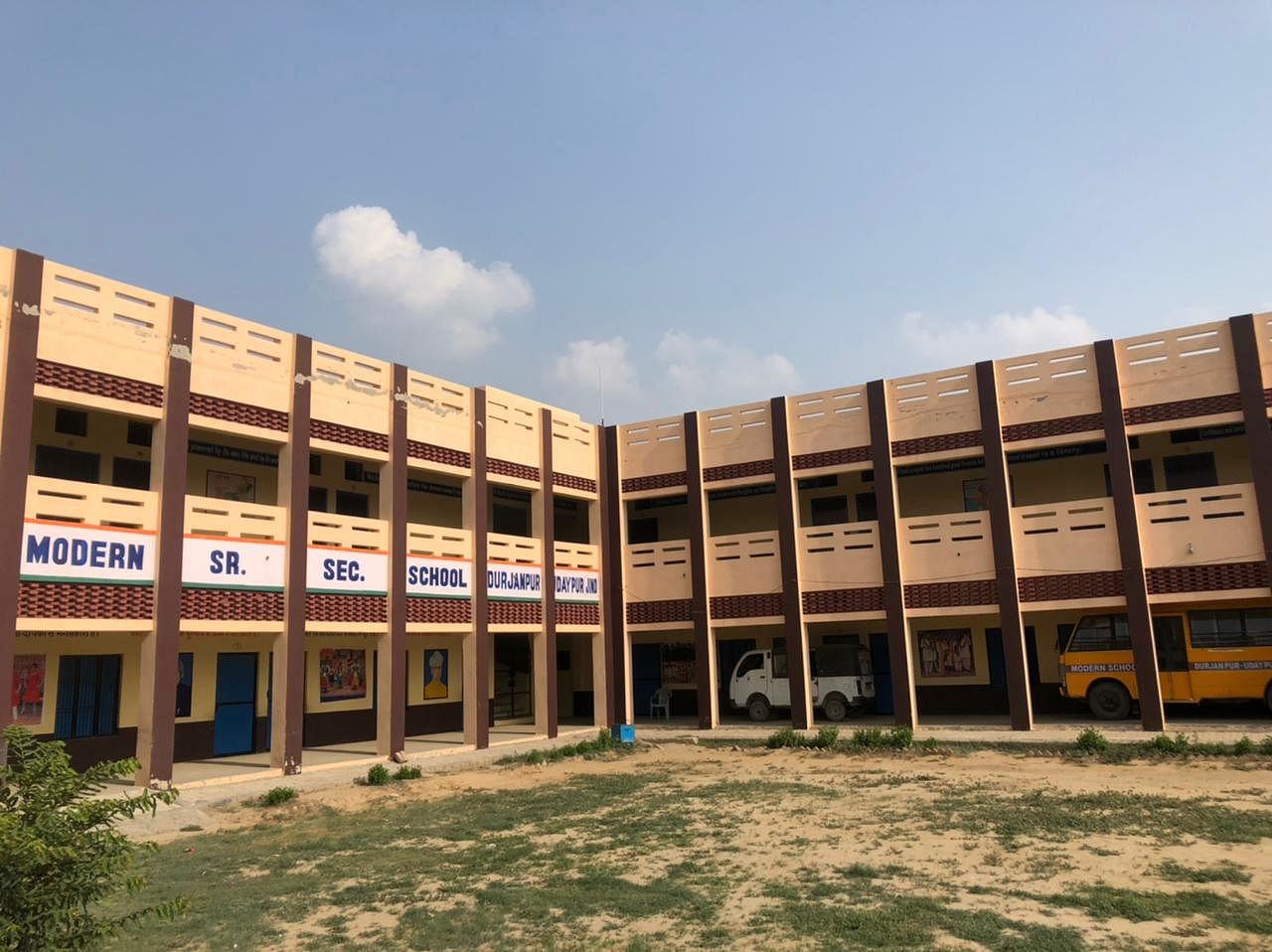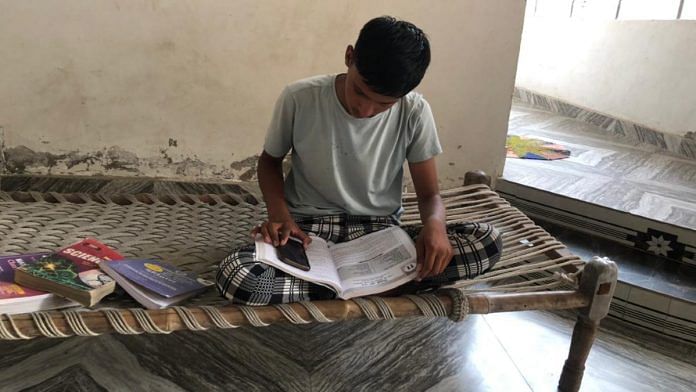Mahendragarh/Rohtak/Jind: “Phone mein kya padhai hovegi? Ek din bhi school nahin gaye baalak, fees kyon kar bharen (How can one study on the phone? Our child hasn’t been to school even once. Why should we pay the fees)?”
The lines reflect a common sentiment one encounters among families in Haryana’s hinterland as the subject of online lessons comes up.
Many see online classes, which have been the status quo since schools shut down last March for the Covid lockdown, as a useless exercise. And they are offended by the prospect of not only paying fees for such classes, but also shelling out additional money to buy a smartphone and an internet connection.
Derived from interactions with parents across three Haryana districts — Mahendragarh, Rohtak and Jind — these remarks provide some context to a worrying finding made by the Haryana education department earlier this month.
Three months after the academic year began, the state has discovered that around 12.5 lakh students who got enrolled in private schools in 2020-21 have not returned for academic session 2021-22.
According to the data, 17.3 lakh students had joined private schools for academic year 2021-22 as of 28 June, as compared to 29.8 lakh last year. The numbers are based on data uploaded on Haryana’s management information system (MIS), a multi-pupose portal launched by the state government for the education sector.
While officials say some of these “missing enrolments” could be the result of schools taking students off the rolls over fees issues, and of parents shifting children to government schools, there are fears many students may have dropped out.
In light of the finding, the Directorate of School Education sent a directive to district officials to look into the matter. “You are directed to hold meetings with heads/management of private schools to get updated the data of these 12.51 lakh students so that the apprehensions of their dropping out can be minimised,” it said in a letter.
While the state probes the “missing students”, anecdotal evidence gathered from interactions with parents and children over the past week suggest that some students have moved to government institutes, while others have indeed dropped out — at least for now.
Families sceptical about online classes told ThePrint that they will send their children back to school as soon as physical classes begin.
There are 8,900 private and 14,500 government schools in Haryana. Schools in Haryana have been allowed to reopen for physical classes from Friday. While classes for 9-12 begin 16 July, the date is 23 July for classes 6-8. The decision to reopen schools for these classes was taken 9 July.
Also Read: As online classes drag on, fatigued students ‘losing interest, becoming asocial’, say parents
‘Koi class nahin lagi’
In southern Haryana’s Mahendragarh, which has emerged as a hub of education, there has been a sharp fall in private school enrolment between 2020-21 and 2021-22, ThePrint has learnt.
District Education Officer Sunil Dutt said “only 61,800 students have enrolled in private schools for the 2021-22 academic session”. The number was more than 1 lakh last year, he said.
Rohit Yadav, 15, a student of the private B.R. Adarsh Senior Secondary School at Sehlang village, is among those who will be shifting to a government school. The reason, his family says, is the uncertainty spelt by the lockdown.
“Beta, yeh lockdown kab khulega? Jab phone mein hi padhai karni hai toh private school ki fees bharne ka kya fayda? Pichhle saal Rs 12,000 fees bhari thi aur koi class bhi nahin lagi (When will this lockdown end? When he has to study on his phone, why should we pay for a private school? We paid Rs 12,000 last year and there wasn’t a single class),” said his mother.
Yadav starts Class 11 this year.
“Phone mein bhi koi padhai hoya kare? Jab tak master danda lekar na padhave, baalak padhai karenge kya (How does one study on the phone? Will students study unless teachers keep watch)?”
Farmer Babu Lal expressed similar apprehensions as he explained why he had withdrawn his daughter, a Class 7 student, from a private school and was moving her to a government institute.
“They asked us to buy an Android phone, but tell me, how do we know if our children are learning a thing or two? We are farmers and don’t know much about this new system,” added Babu Lal, who owns a few acres of land and two buffaloes.
Southern Haryana, where Mahendragarh lies, is a rural belt, largely dependent on agriculture. Sehlang, with a population of 12,000, is situated around 20 kilometres from the Mahendragarh headquarters.
The village has three private schools and two government schools. The administrators of local schools told ThePrint that, usually, most of the fees comes in two or three instalments every year. Since last year, however, the dues have been mounting, they said.
Harish Bhardwaj, the chairman of B.R. Adarsh Senior Secondary School, said they had issued 50 school-leaving certificates (SLCs) — a document students require when shifting between schools — this session.

“We have around 1,200 students but so far 976 have been updated on the MIS portal. We have issued 50 SLCs this session and expect more students to withdraw because the families will not pay for online education as they don’t believe in online methods.”
He said only 10 per cent of families have paid fees for online classes this year, adding that 30 per cent of last year’s dues remain pending.
Ravinder Nandal, president of the All Haryana Private School Sangh, an organisation representing private institutes, said “rural children don’t have the means to access online education”.
“Only a big handful of schools are functional with online classes, the rest 80 per cent of private schools are struggling. Parents, especially in the rural belt, have complete distrust in the online model. It is an alien concept to the farming communities. Until and unless schools reopen, they will not pay a single penny,” he added.
Dutt, however, noted that the district’s government schools “have done really well”. “Our government schools have done really well. We have more than 64,000 students enrolled this year as compared to 61,000 last year,” he added.
Also Read: Only 1 in 3 students in class V to XII had online access in 6 states, shows survey
The migrant factor?
A similar story emerged in Rohtak, where District Education Officer Vijay Laxmi said “city schools are somehow managing, but small-scale schools with 500 to 1,500 students are on the verge of closing down”.
This, she added, is because the schools in Rohtak, a relatively urban district, don’t have the “means for online education and fees is pending from last year”.
However, a social activist involved in education told ThePrint that there might be another reason for students not getting enrolled in schools — the fact that many migrant labourers have returned to their home cities since last year.
Naresh (goes only by first name), whose Gandhi School offers tuitions to migrant labourers’ children, said a survey by his NGO before the lockdown last year had shown that more than 7,000 children of migrants were studying in private and government schools in the district.
“Many families returned to their native places in search of employment, but those who stayed back are struggling hard to continue their children’s education in small-scale private schools,” he added.
One such student who interacted with ThePrint is Rohit, a construction worker’s son studying in Class 11, who has been withdrawn from a private school this year. Rohit said his father, who is now back in their native village at Jhansi, Uttar Pradesh, could not afford the Rs 700/month fees of his school. He is now aiming for admission in a government school.

‘Frustrated families’
In Rohtak’s neighbouring Jind district, as families expressed frustration at having children home all day, schools described how they found themselves forced to discontinue classes, and how teachers had turned to odd jobs as a result.
At Durjanpur village in Uchana block, Ashok, the founder of the local Modern Senior Secondary School, said: “We had 27 teachers but we could not continue online education as parents were not convinced with this medium. So, they took up odd jobs such as working in fields and opening ration shops.”

The school, which has approximately 1,200 students, has already issued “SLCs for 150 students this year”, he added, saying “they have fees to the tune of Rs 7-8 lakh pending since the lockdown days”.
Talking about the struggles faced by students, he added: “Many families do not have mobiles. Some families don’t give mobiles to girls. So, it is very difficult to continue with online classes with a huge digital gap among students.”
Birender Singh, whose grandson and granddaughter were students at Modern Senior Secondary School, makes no bones about his contempt for online classes.
“Online ka koi fayda toh koni (there is no advantage of online classes),” he said.
Singh has withdrawn both children from the school, and they now spend the entire day at home playing video games.
“The day they open schools, we will enrol them again. School mein aake hi baalak kaboo mein aayenge. Ghar par sirf badmashi kar rahe hain (They can only be controlled once they are back in school. They only get into mischief at home),” he added.
(Edited by Sunanda Ranjan)
Also Read: That feeling of loss: What school year 2020 has been like for students of Class 10 & 12



